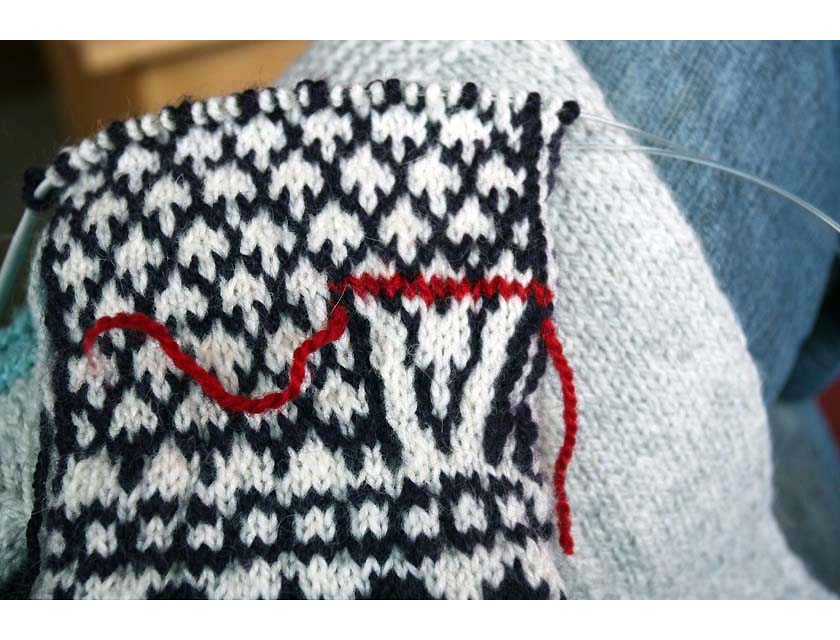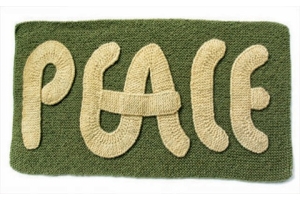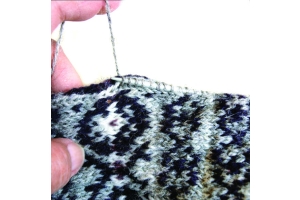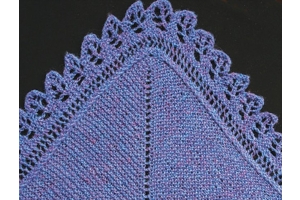Blog #31 Meg Swansen on the Mitten Thumb Trick

Mitten Thumb Trick
When working color-patterned mittens, I use the Thumb Trick shown on the video above. By knitting-in a contrasting color thread you can be assured that when you remove the cc, you have recognizable stitches on both top and bottom of the opening; easily picked up to knit the thumb.
Besides this video, there are step-by-step photos of the technique in SPP 74 (Meg’s Fair Isle Mitts and Selbu Mittens) and SPP 64 (EZ’s Honey’s Mittens, which also includes Elizabeth’s poignant story of the origins of her pair of authentic Norwegian mittens).
Although most useful for stranded knitting, the thumb trick can certainly be used on a single-color mitten, too. Choose a palm-thumb, or a side-thumb (with the center of the thumb-base on the side ‘seam’ of the mitten) - this is especially good for kids, as the finished mittens are ambidextrous! EZ recommended knitting them in threes, to allow for a relatively guilt-free loss of one mitten.
Of course, if you are unsure of the exact location of the thumb, you can finish the mitten before considering the thumb position, by using an afterthought thumb (the same concept as EZ’s afterthought pocket): Try on the finished mitten, and place a marker where you want the thumb base. Snip half-a-stitch in the middle of the wanted thumb width, and ravel stitches in both directions. This provides enough raveled wool to neaten the corners afterward. Pick up the revealed stitches and knit the thumb.
P.S. Working an Afterthought Thumb in an allover color-patterned mitten (or an Afterthought Pocket in, say, my patterned Turkish Coat) is another matter. With no solid-color rounds, you have to snip half a stitch of each of the two colors in that round, then ravel each of them to wanted width. Fine…the lower stitches are waiting to be picked up. But, along the top of the hole are some recognizable stitches interspersed at each color-change with floats instead of stitches. So, pick up and count the lower stitches first, then pick up the upper stitches and twist the floats until you have a number equal to the lower stitch count.
For ease of picking up stitches, the Thumb Trick is excellent in stranded knitting, but if the location is unknown until after the garment is completed, it is good to have the Afterthought as an option.
For more info on executing the Afterthought Pocket, my latest video, knitting EZ’s Tomten Jacket, provides a great example and tips.
A secondary application of the Thumb Trick is for Sock Heels. If working a color-pattern sock, simply knit-in the contrasting thread across the heel. When finished, remove the heel-thread, pick up the stitches and knit another toe (the same shaping you used on the actual toe will create a perfectly functional heel). For a single-color sock you might choose the snipped Afterthought Heel. There are nearly always choices.
Continued Good Knitting,
Meg





